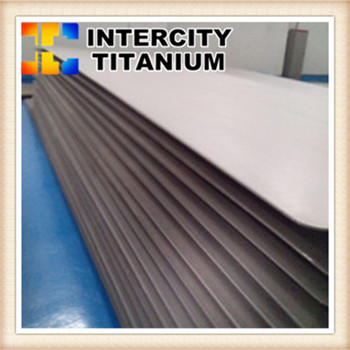Corrosion resistance of titanium alloy
Corrosion resistance of titanium and titanium alloys Titanium has a high degree of stability in neutral or weakly acidic oxide solutions such as titanium and titanium alloys in 100 ° C FeCl 100 ° C CuC12, 100 ° C HgC1: (all concentrations ), 60% AlCl 2 and 100 ° C NaCl at all concentrations, many other titanium oxides are also stable in 100% mono-oxyacetic acid and 100% di-acetic acid, thus making titanium and Titanium alloy in the above solution has been widely used.
Titanium and titanium alloys are also highly stable to ion-containing oxidizer solutions such as 100qC sodium hypochlorite solution, oxygen water, gas up to 75 ° C, sodium hydroxide solution containing hydrogen peroxide, and the like.
Titanium and titanium alloys have more corrosion resistance in wet chlorine than other commonly used metals due to the strong oxidation of chlorine and the steady state of titanium and titanium alloys in moist chlorine. In order to maintain the titanium in chlorine Sexual, need some water content. Critical moisture content is related to oxygen pressure, flow rate, temperature and other factors, and is also linked to the shape and size of titanium equipment or parts and the degree of mechanical damage on the titanium surface. Therefore, the critical moisture content of titanium passivised in oxygen is inconsistent it is generally believed that the mass fraction of 0.01% -0.05% can be used as the critical moisture content of titanium in oxygen. However, actual experience indicates that in order to guarantee the safe use of titanium equipment in oxygen, the water content sometimes is 0.6% Not enough, need up to 1.5%. The critical moisture content also increases as the temperature of the chlorine increases and the air velocity decreases.
Practical experience has also shown that titanium and titanium alloy surface oxide film destroyed, the need for higher water content in order to titanium and titanium alloy re-passivation.
Titanium and titanium alloys also react violently to form titanium tetrachloride in dry chlorine even below 0 ° C, posing a fire hazard. Once titanium and titanium alloys have been destroyed in dry chlorine gas. The reaction is disastrous and the addition of water does not stop the reaction.
As for the behavior of titanium in the dry and wet areas of chlorine gas, the behavior of titanium is not completely understood. According to the thermodynamic analysis, titanium and chlorine cannot exist in equilibrium at room temperature. According to the thermodynamic free energy, stable titanium tetrachloride and, water does not coexist, will further respond, that is
TiC14 + 4H20. Ti (OH) + 4HC1
Therefore, the reaction between chlorine and titanium can be briefly explained: The reaction of titanium with chlorine generates titanium tetrachloride: titanium tetrachloride is a liquid at room temperature and has a boiling point of 136 ° C. C, the reaction of titanium tetrachloride is accompanied by the exothermic process. If the chlorine is dry, a large amount of heat is released and the reaction reaches a very high temperature. When the temperature gets to the melting point of titanium, the titanium begins to burn. Thereafter, as long as enough chlorine is available, the reaction will be vigorous until the reactants are consumed. However, if there is sufficient moisture in the chlorine gas, titanium tetrachloride will interact with water to form titanium hydroxide which is a non-volatile substance and acts as a membrane that adheres strongly to the surface of the titanium. This reaction is very polar Stable reaction, and the surface film is extremely durable in wet chlorine. Thus, titanium has excellent corrosion resistance in wet chlorine, and its stability is closely linked to the moisture content in chlorine gas.
Titanium and titanium alloys have high corrosion resistance in gasoline, toluene, phenol, formaldehyde, trichloroethane, acetic acid, citric acid, chlorobenzene, etc. However, in the case of boiling point and non-aeration, Formic acid with a mass fraction of less than 25% is severely corroded. In acetic anhydride-containing solutions, titanium is not only heavily corroded but also pitting. For many organic media contacted by organic synthesis, Production of propylene oxide, phenol, acetone, chloroquine acid and other chemical media, titanium and titanium alloy corrosion resistant than stainless steel Yang other structural materials.









